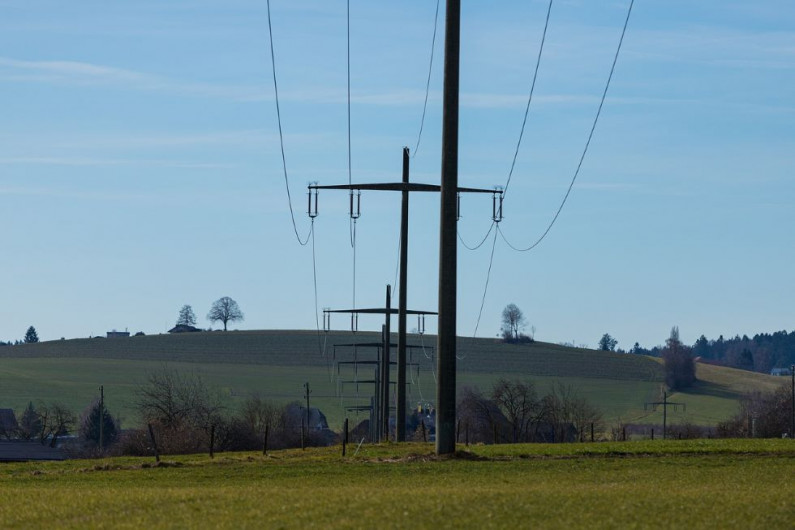The Vermont Community Foundation has distributed its third and largest round of grants totaling $622,334 from the VT COVID-19 Response Fund.
Read more about "The Vermont Community Foundation Grants $622,334 in Third and Largest Round from VT COVID-19 Response Fund"Share Our Post:
The VT COVID-19 Response Fund Recovery Initiatives: A Q+A on Rural Connectivity

The Community Foundation established its VT COVID-19 Response Fund in March 2020 to encourage collective, coordinated grantmaking efforts that can quickly adapt to changing circumstances. Since that time, grants have gone to ensure vulnerable populations receive basic needs—something that is top of mind given recent spikes in cases. In September, we announced five recovery initiatives that address key challenges magnified by the pandemic: Rural Entrepreneurship, Food System Resilience, Rural Connectivity, Learning in Transition, and Welcoming, Equitable, Anti-Racist Communities. Through focused grantmaking, our goal is to set the state on a pathway to more equity and greater resilience in the face of future disruption.
Rural Connectivity
Before the coronavirus pandemic, a reliable connection to the internet was essential for many of us. Flash forward to now, a reliable connection to the internet means access to healthcare, education, employment, customers, grocery delivery—essential for basic needs and income. Still, in Vermont, about 70,000 households and businesses either do not have internet connection or inconsistent, dated dial-up access.
Therefore, it is not a huge leap as to why the Community Foundation would prioritize expanding internet access as part of its pandemic recovery strategy. But with the cost of expanding universal broadband throughout the state estimated to be anywhere between $85-$300 million, we wanted to understand how philanthropy can realistically move the needle. We caught up with Kevin Wiberg, Philanthropic Advisor for Community Engagement, to find out. As a member of the Foundation’s Grants and Community Investments team, Kevin brings a career’s worth of experience focused on the needs and aspirations of rural Vermonters. His research on COVID-19 response and recovery confirmed his observations over the years—internet access has gone from being considered a luxury to now being a necessity for all Vermonters.
Why has the Community Foundation decided to focus on Rural Connectivity as part of its pandemic recovery strategy?
The pandemic has presented a learning opportunity—our team has spent hours since March actively researching the issues and needs of organizations so we can be as strategic as possible in our grantmaking. Among the many interesting things we discovered, reliable internet access has been a recurring theme for all organizations. Domestic violence shelters, food shelves and pantries, mental health providers, rural health clinics, youth serving programs; they all reported greater reliance on the internet to maintain critical services.
The challenge is particularly acute for organizations who rely on personal, one-on-one relationships to administer services—like those in mental health, substance use disorder, and domestic violence. At the drop of a hat, many providers pivoted to working completely remotely. However, many did not have the equipment, training, or reliable internet access to do so effectively.
To be honest, I never thought I’d be looking at broadband as a philanthropic opportunity. But the pandemic illuminated how necessary an internet connection is for your basic needs. So, we set out to answer the question, “How do we help the 70,000 households and businesses who don’t have this?”
What does a grantmaking strategy in support of Rural Connectivity look like in action?
Early on, we learned about Vermont’s Communications Union Districts (CUD), which are municipal entities formed by community volunteers who are interested in bringing the best quality and affordable internet access available to their communities. We know expanding universal broadband access across the state will cost nearly $100 million by some of the lowest estimates, and traditionally, the focus is on minimizing costs. This can come as a detriment to connection quality. When CUDs drive the process, local outcomes can be improved.
CUDs are completely volunteer driven and do not have access to tax dollars. For most, timelines for actual construction projects are more than five years out. To be able to access public or federal funds to speed up that timeline, CUDs must meet certain requirements, which can include expensive engineering and design studies or proving ability to pay for construction projects.
With that in mind, we realize that philanthropy can play an immediate role in helping these community-led organizations build capacity right now to access much more significant public funds later. We have already deployed $270,000 to Vermont’s nine CUDs for general operating and organizational development and intend on continuing this effort with a focus on training and technical assistance.
We know the outcomes of this work will not be immediate. That’s why we’re also working with the Vermont Department of Libraries to identify libraries within CUDs that can serve as community access points for high-speed broadband. Through grants for internet hotspots, setting up safe, physically distant workstations, and staff training, we hope we can begin to close the gap for those 70,000 households and businesses without reliable access.
Our public partners have been helpful resources for informing our connectivity strategies, including the Vermont Department of Public Service and its Emergency Broadband Action Plan staff.
What does success around Rural Connectivity look like? How will it help make Vermont better for all Vermonters?
At the basic infrastructure level, we would love to see the CUDs in the most underserved areas build up enough momentum to start construction of their fiber networks within that five-year timeline mentioned above.
The internet is only continuing to become an essential part of our daily life. In 2020, when 70,000 Vermont households and businesses do not have adequate access, it is no wonder there are geographic areas that struggle to attract new residents, new businesses, new education centers, and new opportunities for communities to flourish. Equitable and affordable access to the internet can change this.
We envision a Vermont where your location or financial standing is not a determining factor in whether you can get online and access whatever digital tools you need to live a healthy, productive, and successful life.
What hurdles currently stand in the way of success around this initiative, and how will they be addressed?
Time and money. When the minimum timetable to even begin construction in some CUDs is five years, it can be difficult to maintain focus, morale, and dedicated resources to ensure projects move forward. This is made even more difficult by the fact that many CUDs solely rely on volunteers. We think the more these groups can be set up like professional organizations with staff, policies, and governance, the more likely they will succeed. Our grantmaking can only provide a certain level of assistance. As CUDs start to develop and build out their networks, greater support through mission investing and accessing substantial federal funding will be required.
Other challenges—whether we’re thinking about expanding broadband connections at libraries or increasing broadband access to underserved areas—are training and affordability. Just because the equipment is there doesn’t mean everyone will know how to use it or be able to pay for it. Public education campaigns will be critical along with strategies to subsidize access for community members who can’t afford it.
How can the Community Foundation’s fundholders and donors help support its work around Rural Connectivity?
You could start with libraries—these institutions have consistently been critical community resources during this pandemic. Perhaps you could use this as an opportunity to speak with your local librarian or school system, ask if they have any connectivity issues, and inquire how a little generosity might be of use. Even a few thousand dollars can make an incredible difference.
An inspiring aspect of my research has been witnessing the incredible amount of community volunteerism and commitment associated with the CUDs—members putting in hundreds of hours of work for no pay. These entities would benefit from additional volunteers, especially those of you with a specific expertise, say in finance, law, or organizational development. There are also towns across the state who are currently not represented by any specific CUD. Membership is a town’s choice, so if you feel it could be beneficial, you can learn more here.
I want to end with this. Rural connectivity is a critical instance where philanthropy needs to keep its eye on the long-term horizon. Vermonters need to start somewhere and focus on community-driven strategies. Although the broadband challenge has been magnified by the pandemic, the problem won’t be solved by the same tools. To move the needle, patience and significant investment remains essential.
Don't forget to check out our other VT COVID-19 Response Fund Q+A's:

